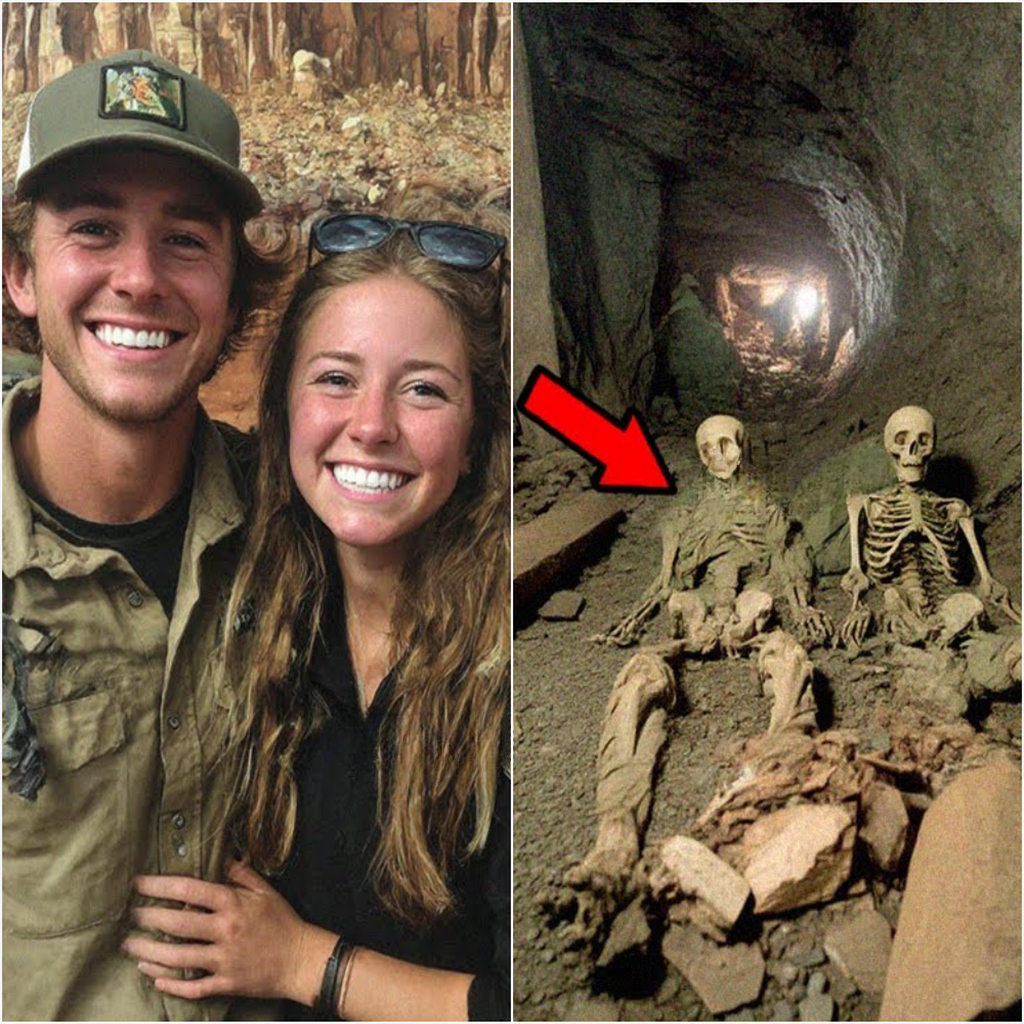In 2011, Sarah, 26, and Andrew, 28, a young couple from Colorado, set out on what was supposed to be a simple three-day camping trip to the Utah desert, but what began as an ordinary weekend escape turned into one of the most chilling mysteries of the decade. They were not thrill-seekers or extreme adventurers, just two people who wanted to spend time together under the open skies, photograph sunsets, and enjoy solitude far from the city.

Their chosen location was near abandoned uranium mines, relics of the mid-20th century, with rusting equipment and roads long erased from official maps, a place that seemed exotic and perfect for unique photos. Before leaving, Sarah texted her sister, promising they would return Sunday night, but they never did. When Monday came and neither showed up for work, alarm bells rang. Calls to their phones went straight to voicemail, and friends confirmed their destination was indeed Utah. Police launched a search operation involving volunteers, helicopters, and ATVs combing the vast desert, but the landscape of canyons, dry riverbeds, and rocks was unforgiving.
For days, there was no trace of them, as if they had vanished into thin air. Hope dwindled, as the desert’s brutal heat by day and chilling cold by night left little room for survival without water. Police briefly considered theories of voluntary disappearance, but this made no sense—they had left pets behind, their accounts untouched, and their credit cards unused. The idea of a random crime also seemed unlikely in such an empty wilderness. Then, on the seventh day, a helicopter pilot spotted flashing hazard lights reflecting in the sun. On an old, barely visible road leading toward the uranium mines sat Sarah and Andrew’s car, its tank empty, hazard lights flickering weakly as the battery neared death.
The car showed no signs of forced entry or accident, doors unlocked, belongings intact. A map sat on the passenger seat, Andrew’s phone in the glove box with no calls made despite having charge, and most strikingly, the navigation system displayed a route leading directly to one of the mines. Investigators followed the trail to a narrow mine entrance littered with debris. Calling their names into the darkness produced only silence. Without proper equipment, venturing deep inside was too dangerous. Searches around the area revealed nothing—no camp, no food supplies, no sleeping bags. Logically, they should have stayed near their car or carried essentials if they went searching for help, but everything was inexplicably missing.
The case went cold. Their photos appeared on missing persons boards, families hired private investigators, but no new leads came. The story of Sarah and Andrew turned into a desert legend, a mystery of two lives swallowed by the sands. For eight years, silence reigned until 2019, when two scrap metal hunters stumbled upon the mine the GPS had once pointed to. Unlike in 2011, the entrance was now sealed with a massive rusty sheet of metal, secured with stones and beams as though someone had deliberately hidden it. Seeing the sheet as valuable scrap, the men cut through it with a gas torch, and when they peered inside with a flashlight, they froze.
About fifteen meters in sat two figures against the wall, close together, heads bowed, looking eerily as if they had fallen asleep. The police were called, and soon forensic experts confirmed the unthinkable—the bodies were Sarah and Andrew, preserved by the dry air of the mine. Their clothes were worn but intact, their positions calm, no signs of struggle or blood. But the autopsy revealed both had multiple fractures in their legs, injuries consistent with falling from a great height, suggesting they had plummeted through a vertical shaft above, leaving them immobilized but alive. More horrifying was the welded sheet sealing the mine. Analysis showed it had been welded from the inside, but no tools were ever found, meaning whoever sealed them in had another way out.
This pointed to deliberate cruelty—someone had found them trapped and helpless, then welded the exit, condemning them to a slow death in darkness. Investigators traced land records and discovered the mine was leased by a reclusive man in his 60s who lived nearby. Known as hostile and secretive, he often quarreled with trespassers. A search of his property uncovered mine keys and detailed maps of tunnels, including hidden ventilation shafts that provided secret escape routes. Confronted with evidence, he admitted to finding the couple but coldly insisted they were intruders. He claimed he wasn’t killing them but “securing his property” by welding the exit shut, leaving them trapped to die.
At trial, though prosecutors struggled to prove intentional murder, he was convicted of intentional abandonment causing death and sentenced to 18 years in prison. For Sarah and Andrew’s families, the mystery that had haunted them for nearly a decade finally had an answer, but the resolution was more horrifying than any imagined. It was not the desert that killed them, nor an accident, nor a ghost story whispered in campfire tales, but one man’s calculated cruelty and lack of compassion. Their story ended not when they disappeared, nor when their remains were found, but when justice finally named the man who turned a forgotten mine into their tomb.





